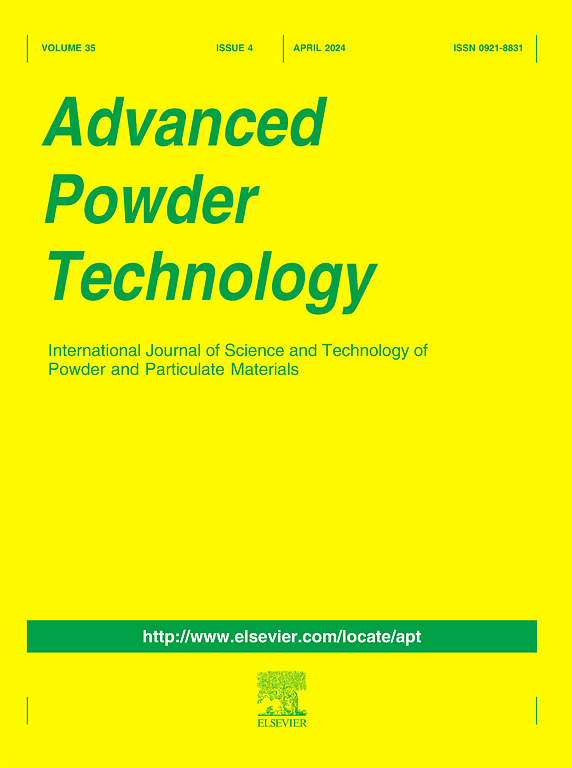Fabrication and electrochemical evaluation of nano-silicon anode materials for energy storage application
IF 4.2
2区 工程技术
Q2 ENGINEERING, CHEMICAL
引用次数: 0
Abstract
In order to solve the inherent low conductivity and the volume expansion problems of the silicon anode material, a modified precipitation method using polyvinyl alcohol as the surfactant was developed to prepare nano-scale silicon particle anode materials in this paper. First, the nano-silica particles were prepared by controlling the surfactant content. Then they were reduced to nano-silicon particles by the magnesium thermal reduction method. The obtained samples were characterized by XRD, Raman, SEM, nitrogen adsorption and desorption and electrochemical performance tests. The results showed that the obtained nano-silicon particles were uniform in size and the average particle size was about 46 nm. Their initial discharge specific capacity was 2653 mAh·g−1 at 500 mA·g−1 and the relative initial coulomb efficiency was 90.3 %. Moreover, they still had a large discharge capacity of 1478 mAh·g−1 after 100 cycles at 500 mA·g−1. Even at a large current density of 2000 mA·g−1, they still retained a high specific capacity of 816 mAh·g−1, showing excellent cycle performance and rate capability.

纳米硅储能负极材料的制备及电化学评价
为了解决硅负极材料固有的低电导率和体积膨胀问题,本文提出了以聚乙烯醇为表面活性剂的改性沉淀法制备纳米级硅颗粒负极材料。首先,通过控制表面活性剂的含量制备纳米二氧化硅颗粒。然后采用镁热还原法将其还原为纳米硅颗粒。采用XRD、Raman、SEM、氮气吸附和脱附以及电化学性能测试等手段对所得样品进行了表征。结果表明,所制得的纳米硅颗粒尺寸均匀,平均粒径约为46 nm。在500 mA·g−1时,其初始放电比容量为2653 mAh·g−1,相对初始库仑效率为90.3%。此外,在500 mA·g−1下循环100次后,它们仍然具有1478 mAh·g−1的大放电容量。即使在2000 mA·g−1的大电流密度下,它们仍然保持816 mAh·g−1的高比容量,表现出优异的循环性能和倍率能力。
本文章由计算机程序翻译,如有差异,请以英文原文为准。
求助全文
约1分钟内获得全文
求助全文
来源期刊

Advanced Powder Technology
工程技术-工程:化工
CiteScore
9.50
自引率
7.70%
发文量
424
审稿时长
55 days
期刊介绍:
The aim of Advanced Powder Technology is to meet the demand for an international journal that integrates all aspects of science and technology research on powder and particulate materials. The journal fulfills this purpose by publishing original research papers, rapid communications, reviews, and translated articles by prominent researchers worldwide.
The editorial work of Advanced Powder Technology, which was founded as the International Journal of the Society of Powder Technology, Japan, is now shared by distinguished board members, who operate in a unique framework designed to respond to the increasing global demand for articles on not only powder and particles, but also on various materials produced from them.
Advanced Powder Technology covers various areas, but a discussion of powder and particles is required in articles. Topics include: Production of powder and particulate materials in gases and liquids(nanoparticles, fine ceramics, pharmaceuticals, novel functional materials, etc.); Aerosol and colloidal processing; Powder and particle characterization; Dynamics and phenomena; Calculation and simulation (CFD, DEM, Monte Carlo method, population balance, etc.); Measurement and control of powder processes; Particle modification; Comminution; Powder handling and operations (storage, transport, granulation, separation, fluidization, etc.)
 求助内容:
求助内容: 应助结果提醒方式:
应助结果提醒方式:


